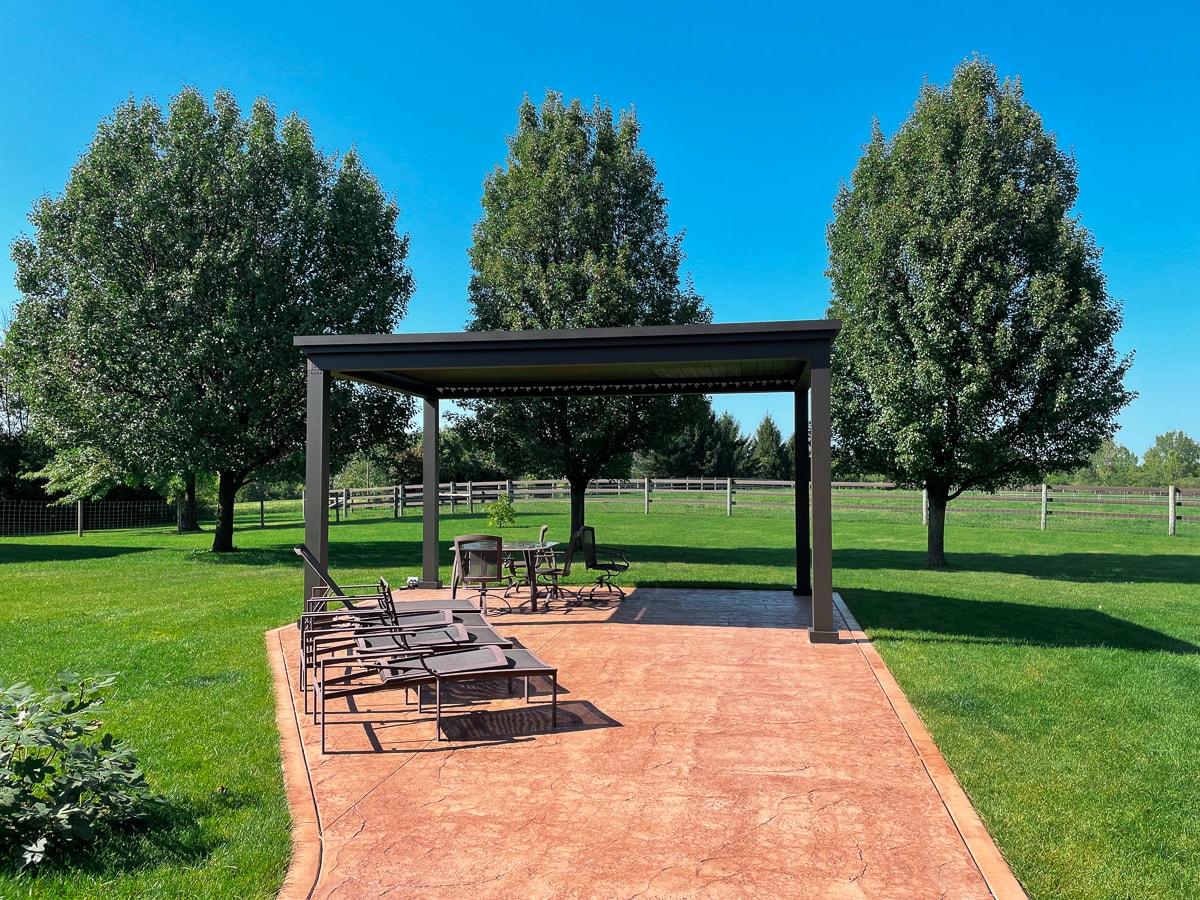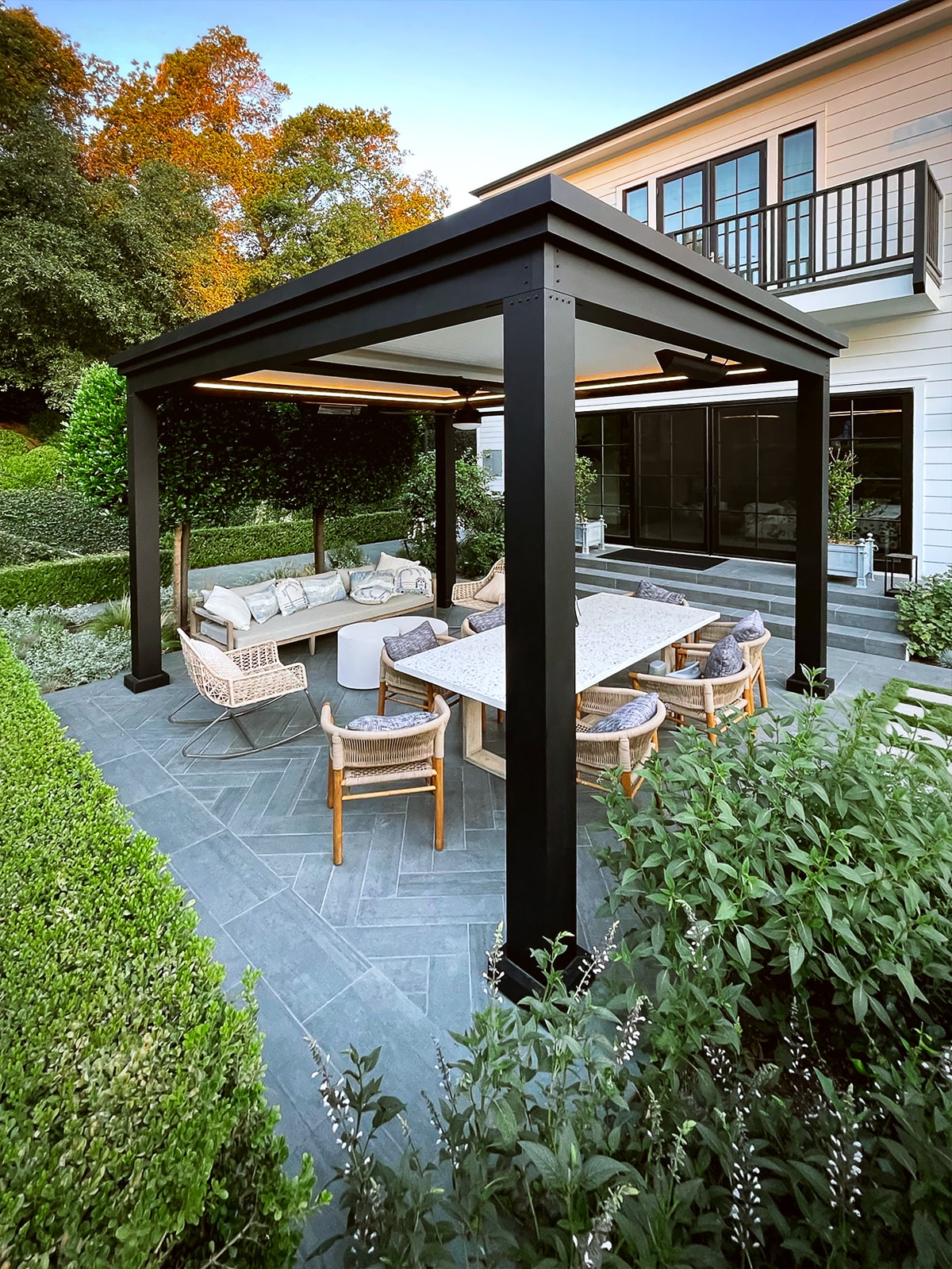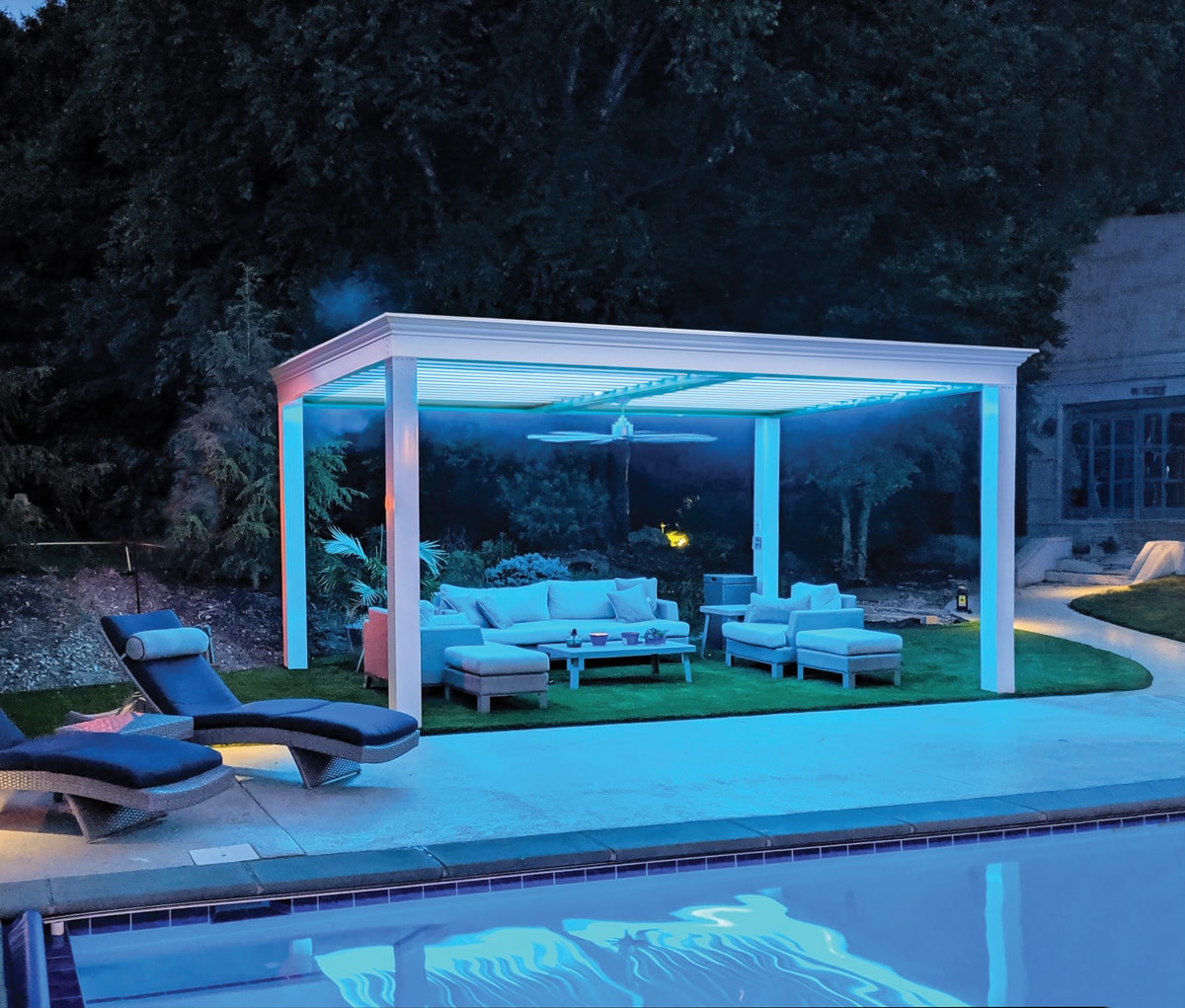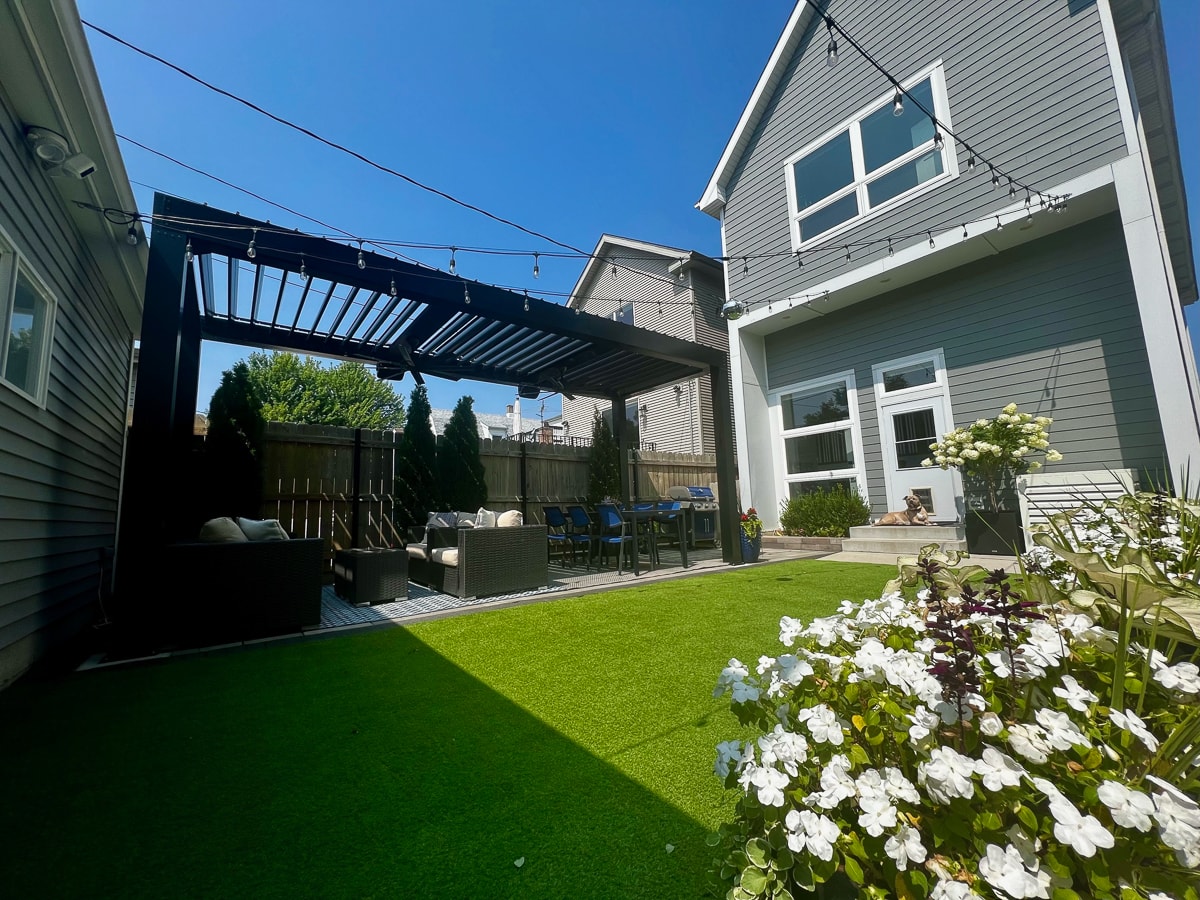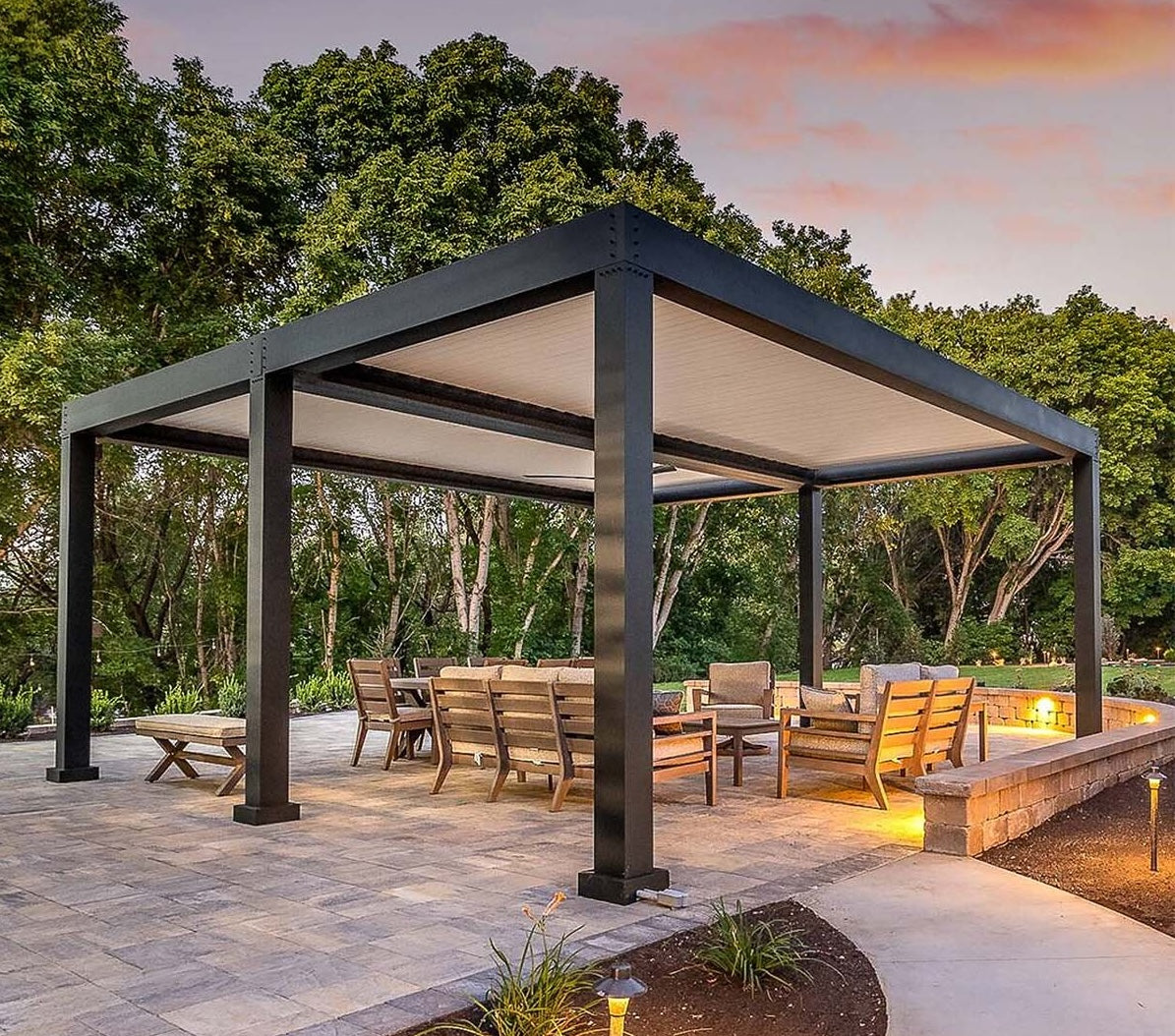Top Ideas for a Freestanding Pergola Next to House for Outdoor Living
Designing Your Outdoor Space
As with any project, it is best to have a detailed plan for your project. When planning your free-standing pergola project, consider the overall aesthetic you want to achieve with your freestanding pergola, such as a modern or traditional look. Think about the activities you want to do in your outdoor space, such as dining, relaxing, or entertaining. Determine the amount of sunlight and shade you want in your outdoor space. Consider the proximity to your house and how you want to flow between indoors and outdoors.
Choosing the Right Pergola Type
Attached Pergola vs Free Standing Pergola
The names are pretty self explanatory: An attached pergola is a structure fixed to a building or existing structure, while free standing pergolas are self contained structures that set over a patio.
When deciding between freestanding pergolas and attached pergolas, it's important to consider factors like space, functionality, and budget. For attached pergolas, you may need to hire a contractor to make sure the attachment is structural sound and meets building codes, while freestanding pergolas can be constructed DIY quite easily with a pergola kit.
Pergola Size and Shape Considerations
Whether you choose a freestanding pergola or a pergola attached to your house, it's important to ensure it fits well within the dimensions of your outdoor space. Keep in mind the baseplates of the pergola may make the total footprint slightly larger than ordered, so plan your deck, concrete slab, or footer placements accordingly.
If your freestanding pergola is going next to your house, you'll have to keep in mind where the posts will be in relation to any doors on windows that might be obstructed, as well as the overall pergola height in relation to any roof overhang and gutters you have in the chosen area.
Materials for Your Pergola
There are a lot of different material options for your pergola, such as vinyl, aluminum, steel, and wood. Consider the durability, price, and work requirements of each material, as well as the style and aesthetic you want to achieve with.
Wood is strong, but requires a lot of upkeep to keep from rotting; vinyl is maintenance free, but usually won't last a long time; steel should be properly treated to make sure it doesn't rust; while a high quality powder coated aluminum will last for years, and requires very little maintenance.
Integration with Existing Landscape
When installing a freestanding pergola, it’s essential to consider its integration with the existing landscape. A well-designed pergola can enhance the beauty of your outdoor space, but it can also disrupt the natural flow of the landscape if not planned carefully. To ensure a seamless integration, consider the following factors:
-
Evaluate your yard to determine the best location for your pergola - avoid any flood prone areas.
-
Choose a pergola design that complements the existing architectural style of your home and landscape.
-
Take into account the size of any plants or trees might grow to in the surrounding area.
-
Take into account how the structure will look in the context of the landscape design.
Building Your Pergola
To determine if you need a building permit for your freestanding pergola, research local building codes and regulations. Follow safety guidelines and building instructions carefully when constructing your pergola - if you're not sure, contact your local building authorities and ask whether you need a permit.
Consider hiring a professional to build your pergola, especially if you’re not experienced with DIY projects. It's important for a pergola to be installed correctly to ensure the longevity and safety of its use!
Lighting and Electrical Considerations
Lighting and electrical considerations can be crucial when installing a freestanding pergola - especially if your pergola has motorized louvers or you plan on attaching recessed or LED lighting to it. Make sure your pergola is near to an electrical outlet, or that you can discreetly and safely run an outdoor extension cord if necessary.
It's a good idea to consult with a licensed electrician to ensure that the lighting and electrical systems are installed safely and correctly, especially if you're installing anything isn't made to be DIY. Electricity is not something to play around with, and hiring a professional will prevent potential hazards and ensures compliance with regulations.
Maintenance and Care
Maintenance for your pergola(depending on the material) can be pretty basic. First, regularly clean and maintain your pergola to prevent damage and rot. Inspect your pergola regularly for signs of wear and tear. If you decide to go with a vinyl or wood pergola, you may want to consider staining or painting your pergola to protect it from the elements. Research local maintenance and repair services if you’re not comfortable with DIY maintenance.
Creating a Functional Outdoor Living Space
Consider adding an outdoor kitchen or dining area to your pergola. Think about adding seating and decor to create a cozy outdoor living space. Research different outdoor lifestyle ideas, such as outdoor movie nights or game nights. Consider adding a self-standing pergola to create a separate outdoor room, as freestanding pergolas offer versatility in different locations around your property.
Seasonal Use and Adaptability
A freestanding pergola can be used year-round, but its functionality and comfort may vary depending on the season. There are some ways to stretch out your pergola use throughout the year though.
Some pergola designs (such as ones with a retractable roof or adjustable louvers) allow for easy adaptation to changing seasons. This provides flexibility in managing sunlight and shade throughout the year.
Installing heating or cooling elements, such as infrared heaters or misting systems, can extend the use of the pergola during extreme weather conditions, ensuring comfort regardless of the season.
Freestanding Pergola Ideas
There are so many options for different freestanding pergola options on the market. Here are a few:
-
Traditional pergola (usually made from wood)
-
Vinyl pergolas
-
DIY Modern aluminum louvered pergola kits
-
DIY wood pergola kits
Building Permits and Regulations
It is always a good idea to research local building codes and regulations to ensure your project compliance. This will help you determine if you need a building permit for your free-standing pergola. Consider hiring a professional to ensure compliance with local regulations, especially if your free-standing pergola is part of a larger outdoor living area project.
Conclusion
A freestanding pergola can enhance your outdoor living space and create a unique lifestyle. Consider the design, materials, and functionality of your pergola when choosing the right type. Research local building codes and regulations to ensure compliance. Regularly maintain and care for your pergola to ensure it lasts for years to come.
By considering these factors, you can create a beautiful, functional, and sustainable freestanding pergola that enhances your outdoor living space without breaking the bank.





